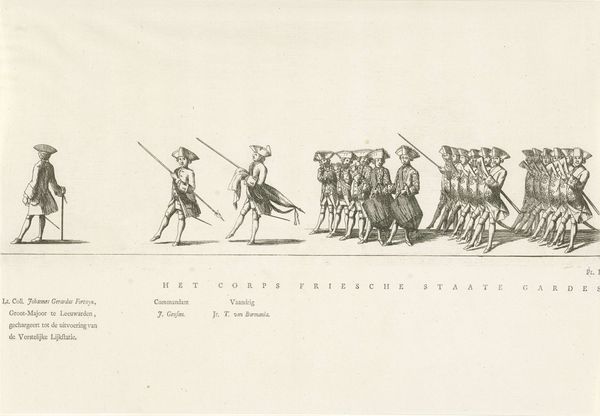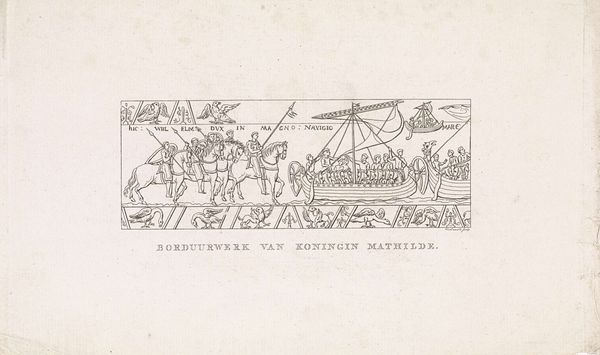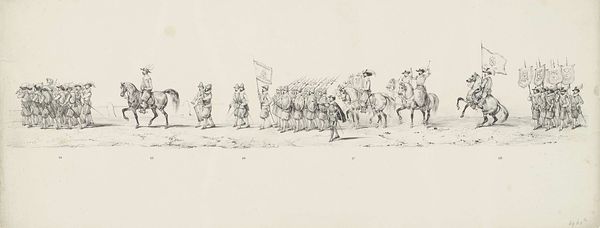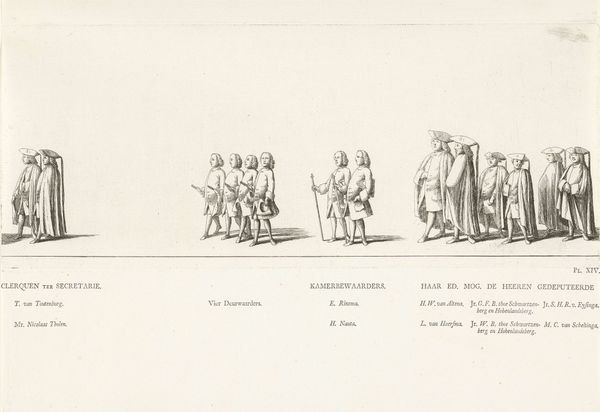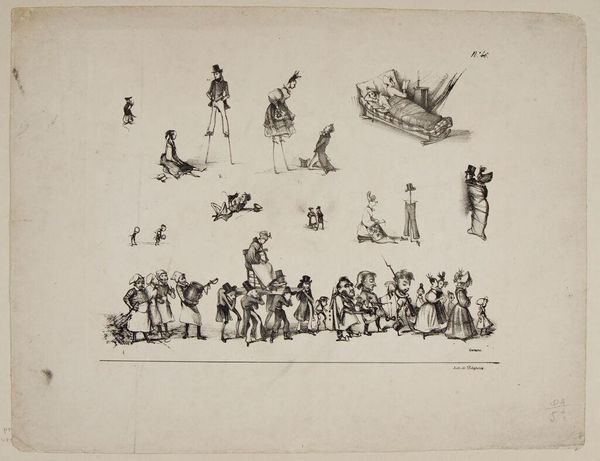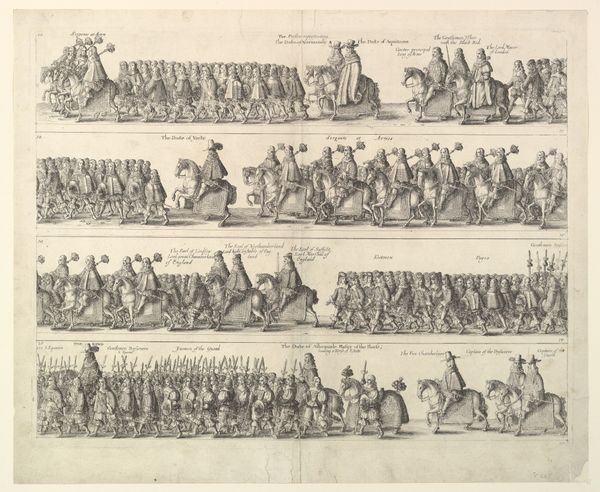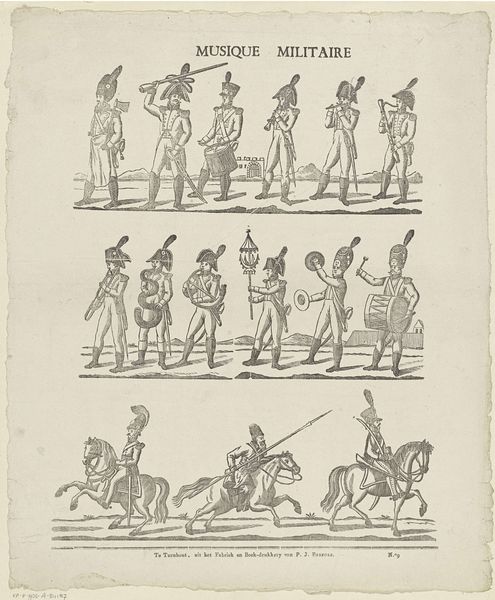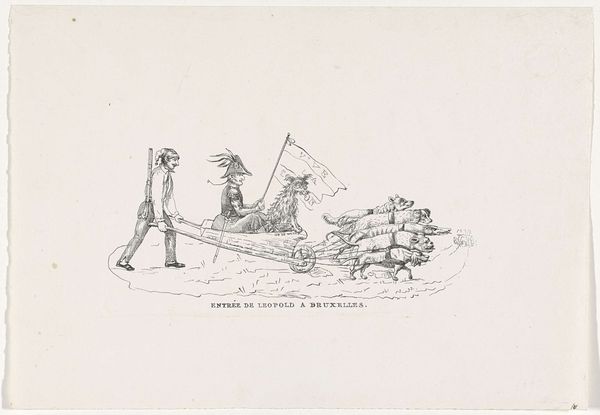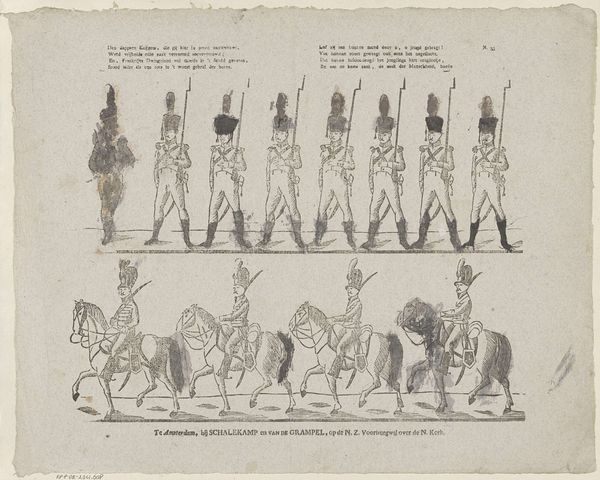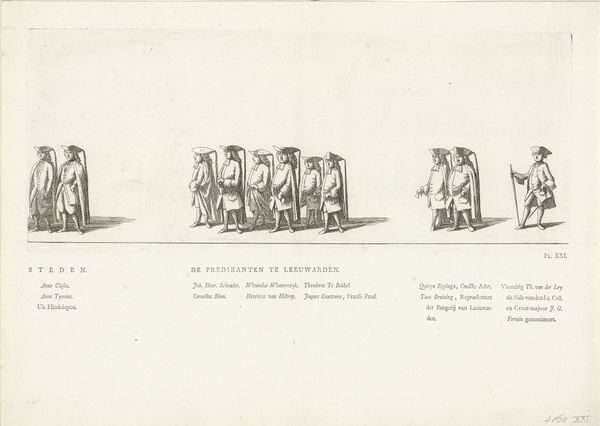
Friese Garde du Corps in de begrafenisstoet van prinses Maria Louise, 1765 1765
0:00
0:00
Dimensions: height 250 mm, width 365 mm
Copyright: Rijks Museum: Open Domain
Editor: So, here we have a print from 1765 by Rienk Jelgerhuis titled "Friese Garde du Corps in de begrafenisstoet van prinses Maria Louise". It looks like an engraving, depicting soldiers marching in a funeral procession. There's something about the regimented rows that feels quite stiff and formal to me. What do you see in this piece, looking at it through your lens? Curator: Well, immediately I'm drawn to think about the context surrounding the creation of this image. Printmaking served as a crucial medium for disseminating information and shaping public opinion in the 18th century. This wasn't just an aesthetic representation; it was a carefully constructed image intended to communicate a message. Do you notice anything particular about who is being represented and how? Editor: They’re definitely meant to look orderly. And there seem to be different ranks visible. Some are in groups, others stand apart and likely command. So you’re saying the artist aimed to showcase social structure? Curator: Precisely. Consider the political power embedded in imagery. The Friese Garde du Corps represented the authority and strength of the ruling class, even in mourning. Its presence reinforced the social hierarchy and the state's power at a moment of transition. It suggests that even in death, power persists. Have you noticed how the technique also supports this political messaging? Editor: Because it is regimented? The engraving itself seems like a precise tool for representing that? Curator: Exactly. Engraving lends itself to precision and replication, serving the need to disseminate uniform imagery of power and control. This print wouldn't just commemorate a princess; it served to uphold and perpetuate the existing social order. Editor: That is powerful, something I wouldn't have thought about initially! It's more than just a historical record, it's actively participating in shaping society’s views on power. Curator: Yes, by analyzing art through a historical lens, we can see these visual representations not as passive reflections, but as active participants in social and political dialogues.
Comments
No comments
Be the first to comment and join the conversation on the ultimate creative platform.
